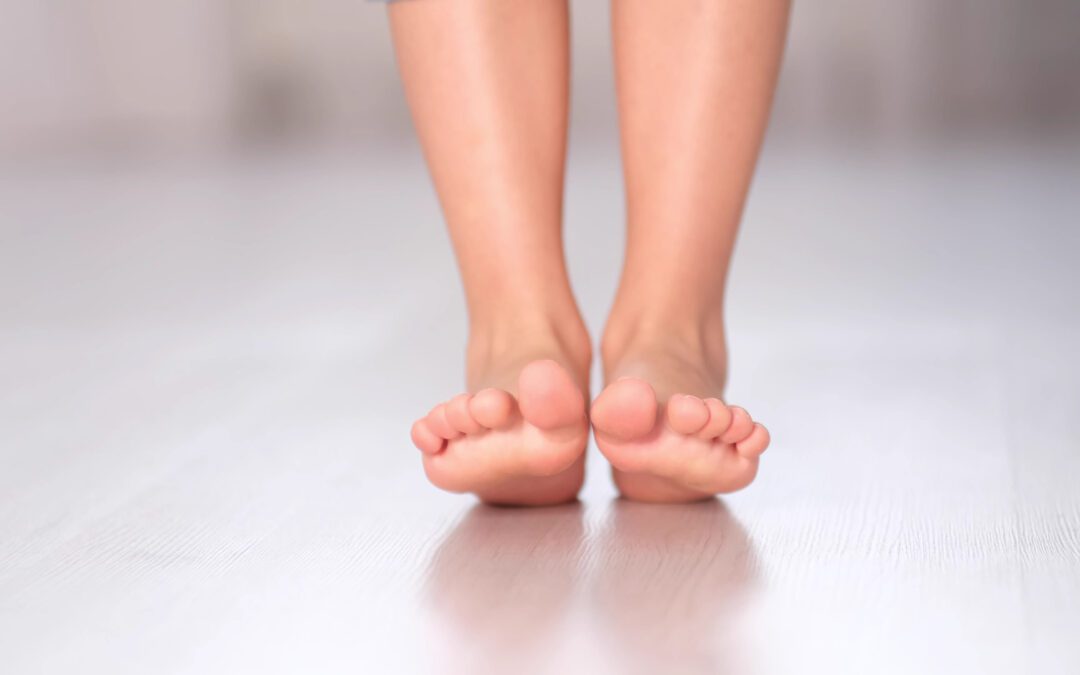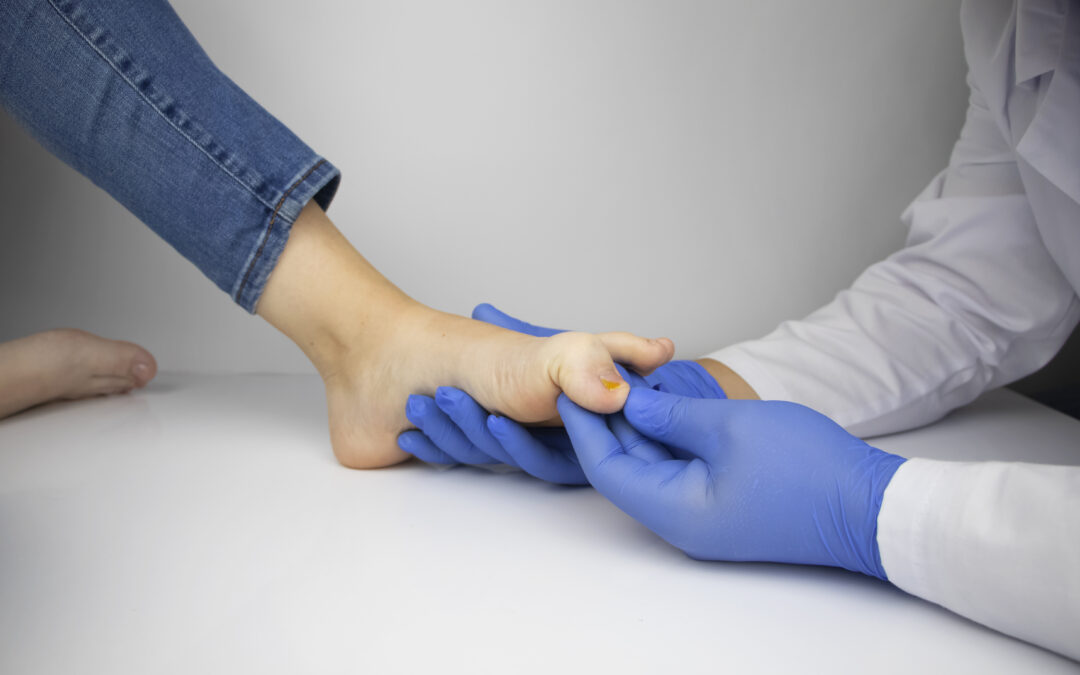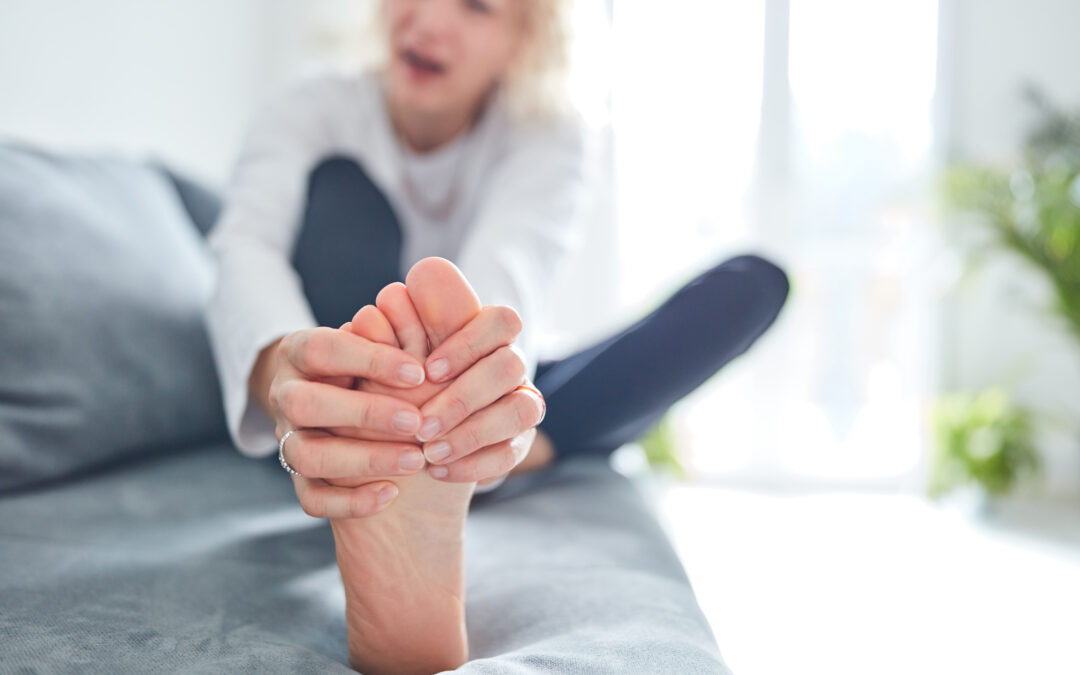Proper foot care is imperative for people with diabetes because even a minor injury such as a small cut can lead to severe implications. Poor circulation and nerve damage caused by diabetes can put you at risk of leg/foot amputation and irreversible foot damage; therefore, you must prevent injuries and infections from developing in the first place to avoid the need for diabetic wound care.
Here are some essential health practices for diabetics:
1. Daily Foot Inspection
People with diabetes should inspect their feet for cuts, blisters, nail problems, swelling and redness daily. It is important to be thorough; our podiatrists at Podiatry Associates suggest that you use a magnifying handheld mirror to check the bottom of your feet. If you notice anything call our podiatrists in Baltimore at Podiatry Associates to schedule an appointment. Keep in mind that this daily inspection should not replace your routine diabetic check-up with your podiatrist.
2. Daily Gentle Cleaning
Gentle regular cleaning of your feet is essential, do not use hot water when washing your feet, only use lukewarm water. Our podiatrists suggest sticking to a comfortable lukewarm temperature that you would use to bathe a newborn baby. It is vital to be gentle when cleaning your feet and avoid scrubbing since feeling in your feet is typically absent. Use a soft washcloth or sponge and gently dry by blotting or patting. Don’t forget to clean and dry between your toes.
3. Never Treat Yourself
Our podiatrist strongly advise against treating yourself even for simple things like cutting your own nails and trimming calluses to more complicated treatments of corns, ingrown toenail removal surgery, and diabetic foot ulcer treatment. This means no bathroom surgery and medicated pads. Only a professional should perform diabetic foot care treatment Baltimore.
4. Invest In Socks For Diabetics
Our podiatrists in Baltimore advise people with diabetes to always wear a fresh pair of clean and dry socks daily. Special socks, made especially for people with diabetes, is an excellent investment because these socks are designed with extra cushioning, no elastic tops, and cover higher than the ankle. Diabetic socks are made from moisture-wicking fibers that keep feet dry and minimize the chances of fungal infection caused by sweat.
5. Clean Out Your Shoes
Before you wear your shoes, it is essential that you clean them out by shaking them and feeling the inside. This is significant because a pebble or other foreign object might cause a small cut or injury that could quickly escalate into a bigger issue. So always inspect and clean out your shoes before you put them on.
6. Avoid Walking Barefoot
As mentioned earlier, any cut or injury can lead to a big problem. So it is best never to walk barefoot – not even when you are at home! Shoes and slippers minimize the chances of getting a scratch or a cut.
7. Keep Your Diabetes In Check
For every diabetic, keeping the blood sugar levels under control is most important and the best way to prevent further complications and issues. Schedule a regular appointment for diabetic foot care Baltimore.
8. Stay Active
It is essential to stay active to keep your blood flowing. Daily walks and exercise will keep your feet in good health, and it will also have a positive impact on your overall health.
9. Quit Smoking
Although, it might seem at first to be completely unrelated to taking care of your feet, smoking is especially hazardous for diabetics. Our podiatrists in Baltimore recommend diabetes patients to refrain from smoking because it can restrict blood flow to your feet.
Foot care should be a necessary part of your daily routine. Remember, proper diabetic foot health starts with you so set a routine and follow the above tips on an everyday basis.
If you need professional diabetic foot care treatment in Baltimore and the surrounding areas or have any questions about the tips described above, check out our Podiatry Associates locations and find a podiatrist near you. Feel free to call our scheduling office to discuss your specific situation: (833) 500-FEET.
Time to See a Podiatrist?
If you have any of the issues described above, it’s time to consult an expert. Connect with Podiatry Associates for an evaluation. All of our doctors are board certified/qualified and we’re dedicated to preserving your foot health.
Other Related Articles:
- What is the Impact of Diabetes in Wound Healing?
- The Key Role of a Podiatrist in Diabetic Foot Care
- 9 Healthy Tips for Diabetic Foot Care
- What is Diabetic Foot Pain?
- What Diabetic Foot Care Treatments Are Best Left to Your Podiatrist?
- Can a Podiatrist Perform Surgery? What Types?
- When to See A Podiatrist
- Everything You Need to Know About a Podiatrist
- 11 Things Every Patient Should Know About Foot Surgery





